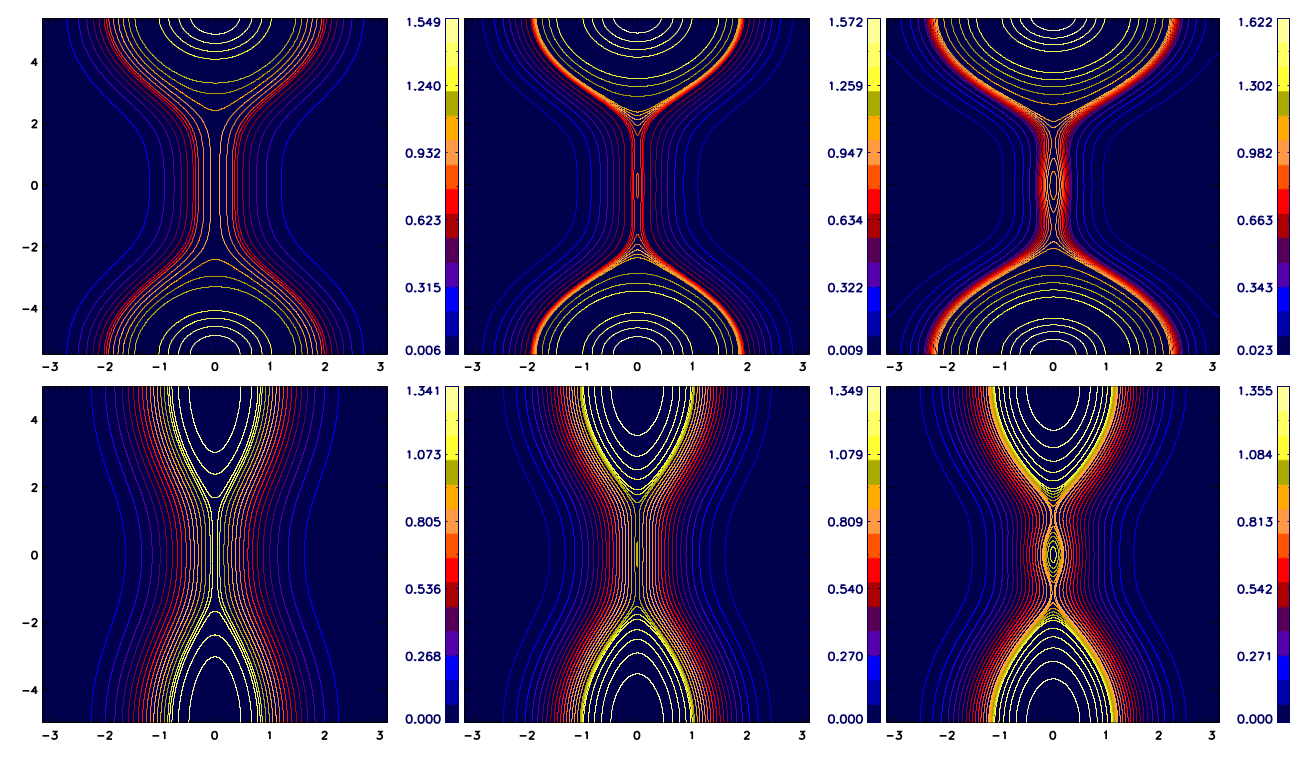Magnetic Reconnection
In my postdoc at PSFC, MIT, I collaborated with Prof Nuno Loureiro, Muni Zhou, a graduate student and Prof. Dmitry Uzdensky to work on magnetic reconnection.
It is a fundamental plasma phenomenon, which involves a rapid topological rearrangement of the magnetic
field, leading to efficient magnetic energy conversion and dissipation. It is widely relevant in fusion tokamaks, space physics and astrophysics.
Magnetic reconnection is thought to be the cause of solar flares, substorms in earth's magnetosphere and
particle acceleration in jets and pulsar winds
 Time sequence is from left to right. Plasmoid formation in the current sheet formed on X-point collapse of the primary tearing mode. The two rows indicate two different runs with the lowest and highest Lundquist numbers respectively (S=250 and S=5560)
Time sequence is from left to right. Plasmoid formation in the current sheet formed on X-point collapse of the primary tearing mode. The two rows indicate two different runs with the lowest and highest Lundquist numbers respectively (S=250 and S=5560)
The plasmoid instability has more recently played an important role in advancing the understanding of magnetic reconnection.
It has been shown to arise at large Lundquist numbers in MHD and render the subsequent
steady state magnetic reconnection rate in the system independent of the Lundquist number.
In our study we explored the plasmoid instability in the "semi-collisional" regime, where
the kinetic scales are larger than the expected inner layer width (set by collisions) of the
current sheet. This feature consequently renders the system prone to the plasmoid instability
at low Lundquist numbers (which are experimentally accessible). Using simulations with reduced gyrokinetic model,
we have demonstrated the operation of the instability at low Lundquist numbers.
A more recent interesting work is about exploring magnetic reconnection as the cause for inverse cascades in
3D nonhelical decay MHD turbulence! This paper is being written up and is to be submitted soon.
 Evolving magnetic field (one component) as the turbulent system decays and energy inverse cascades.
Evolving magnetic field (one component) as the turbulent system decays and energy inverse cascades.